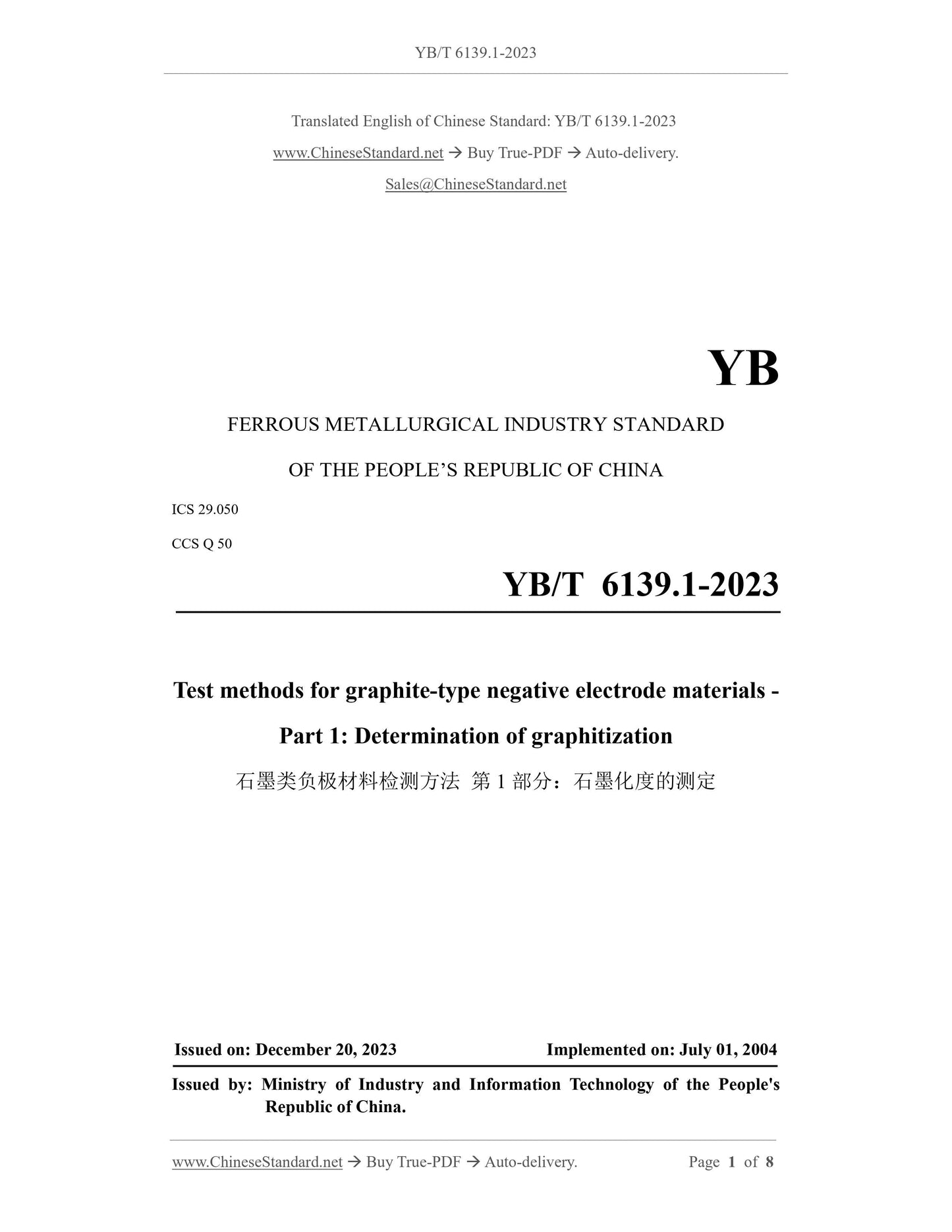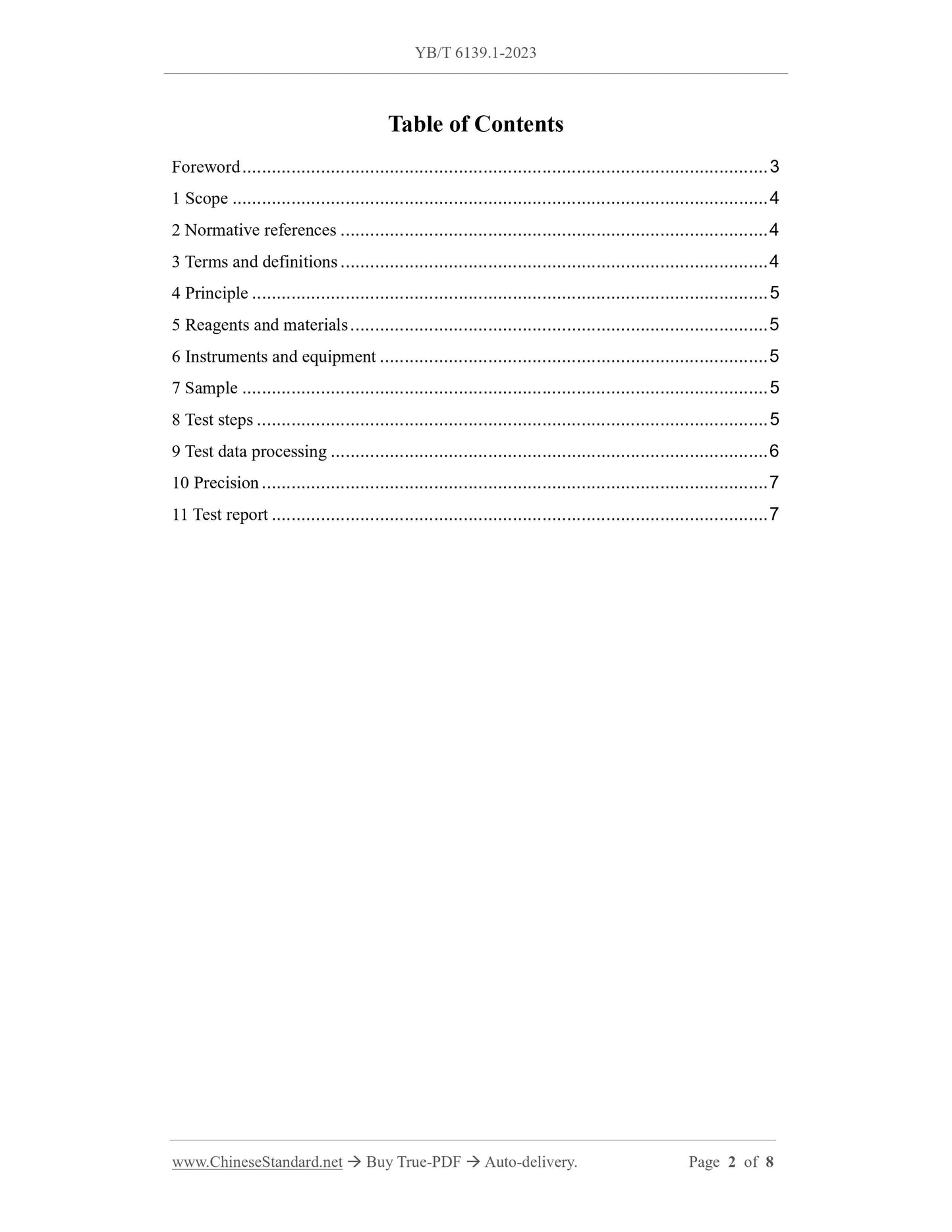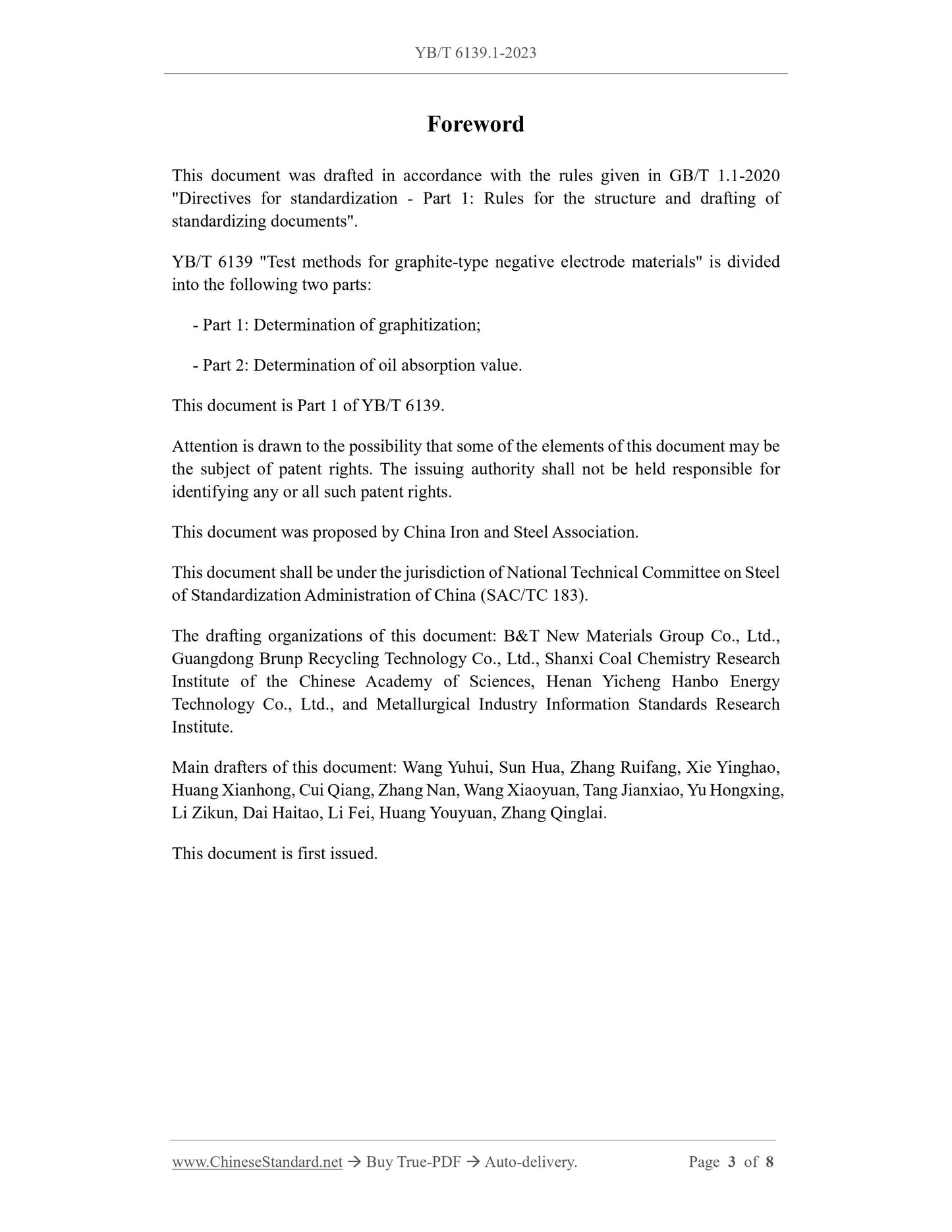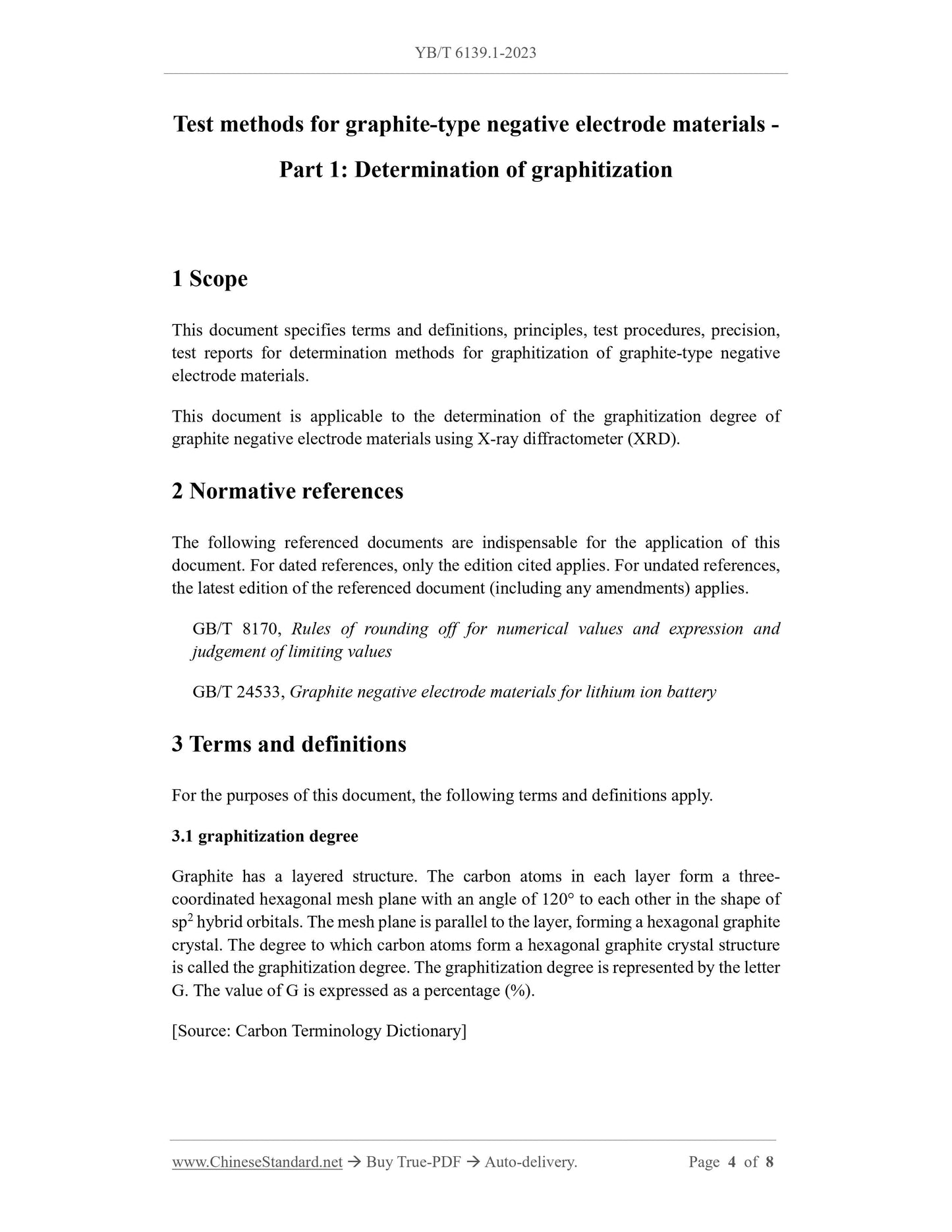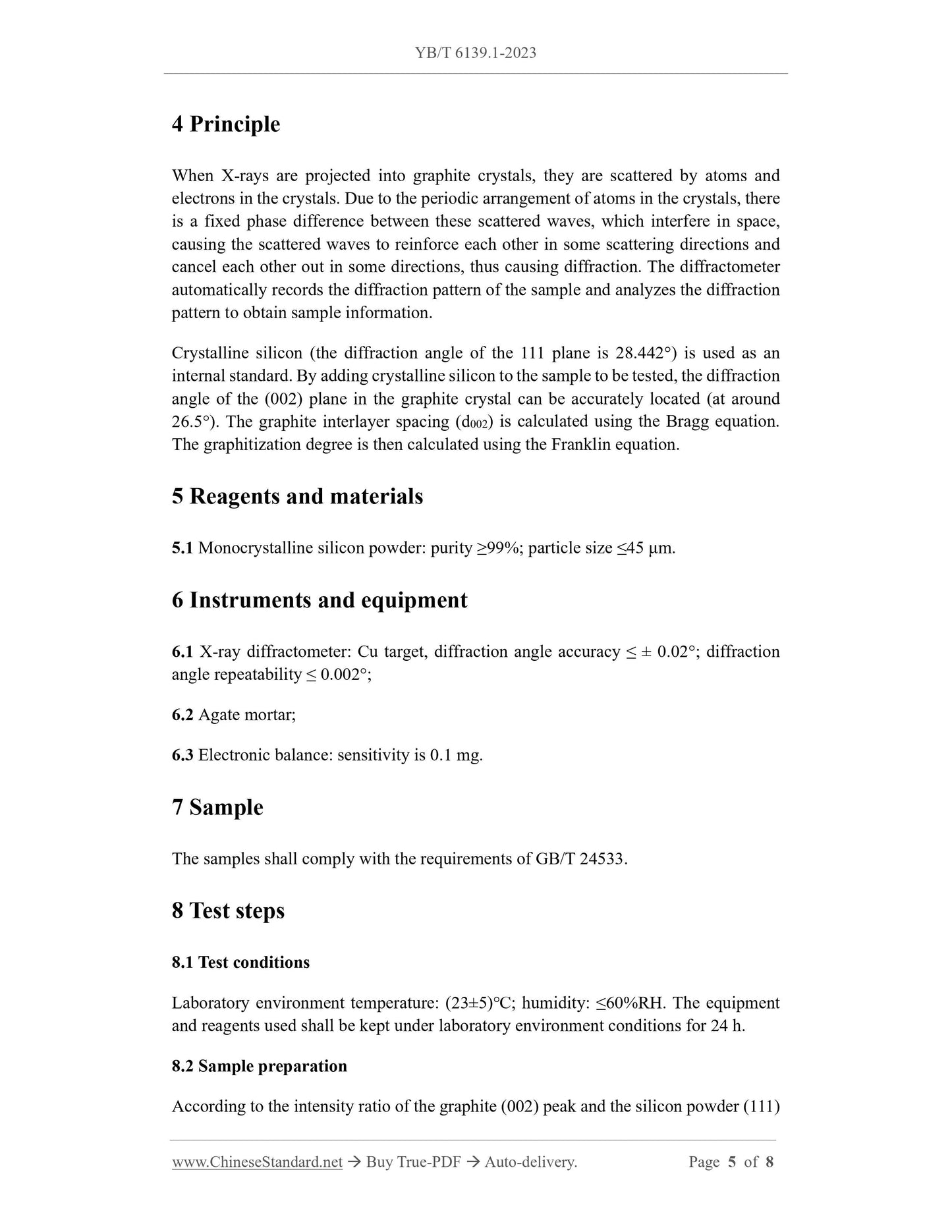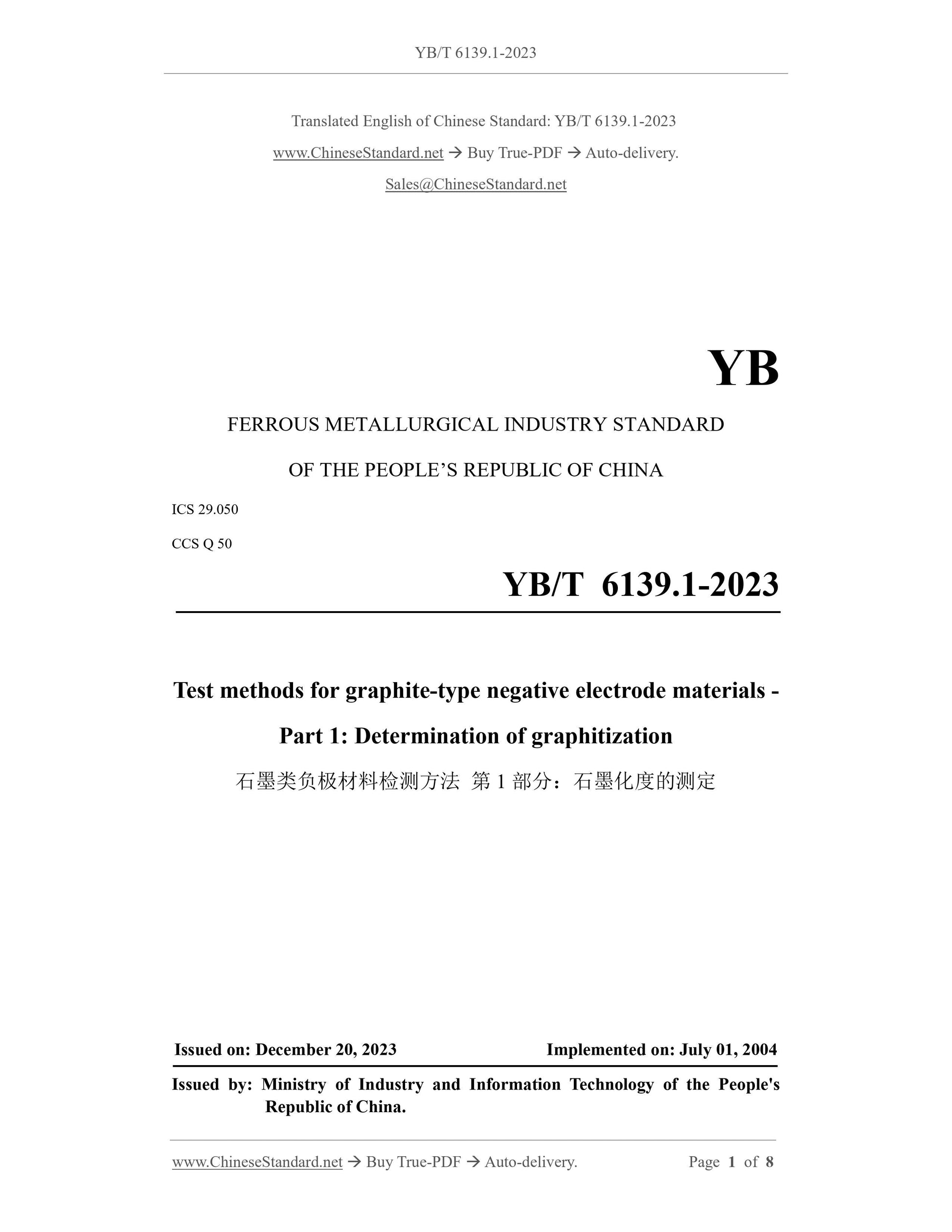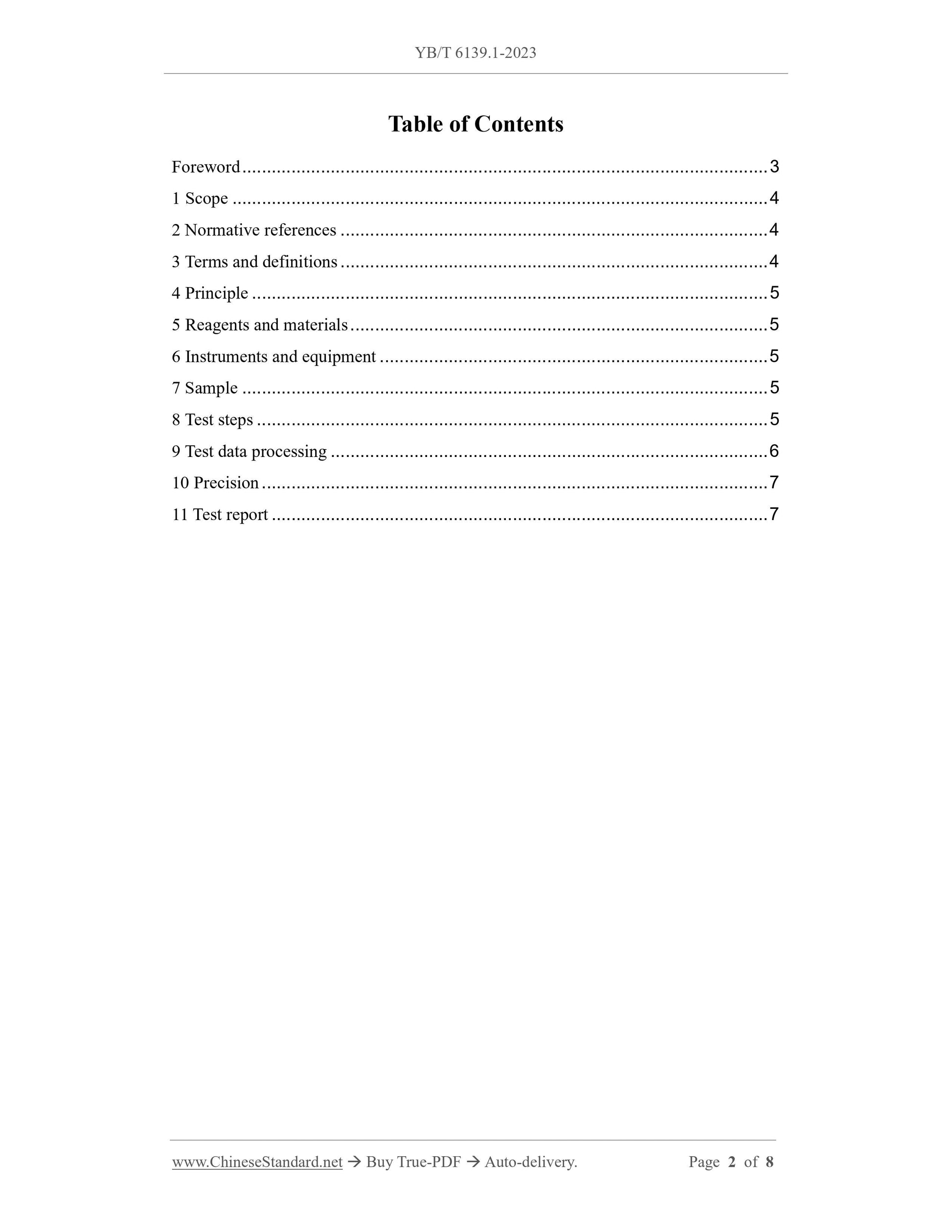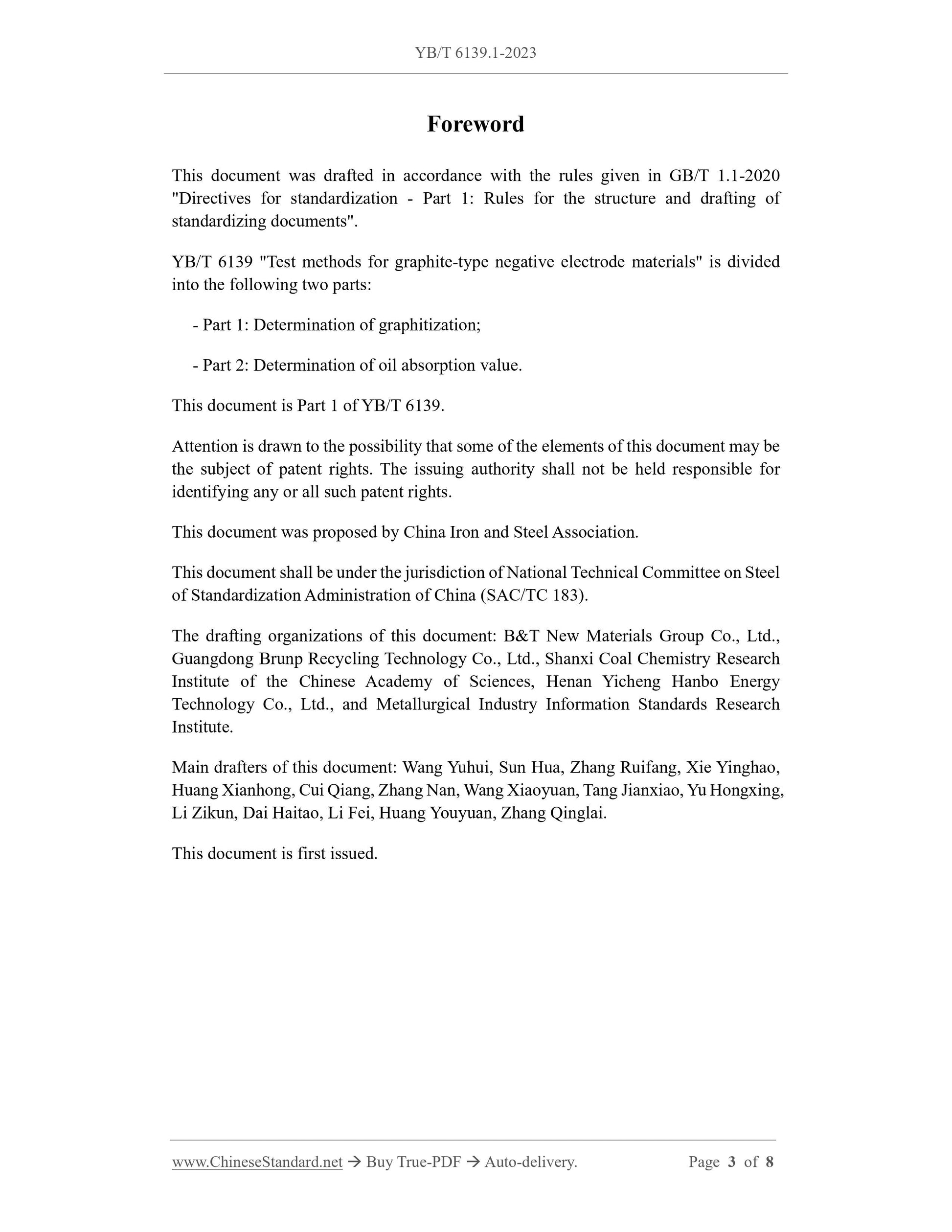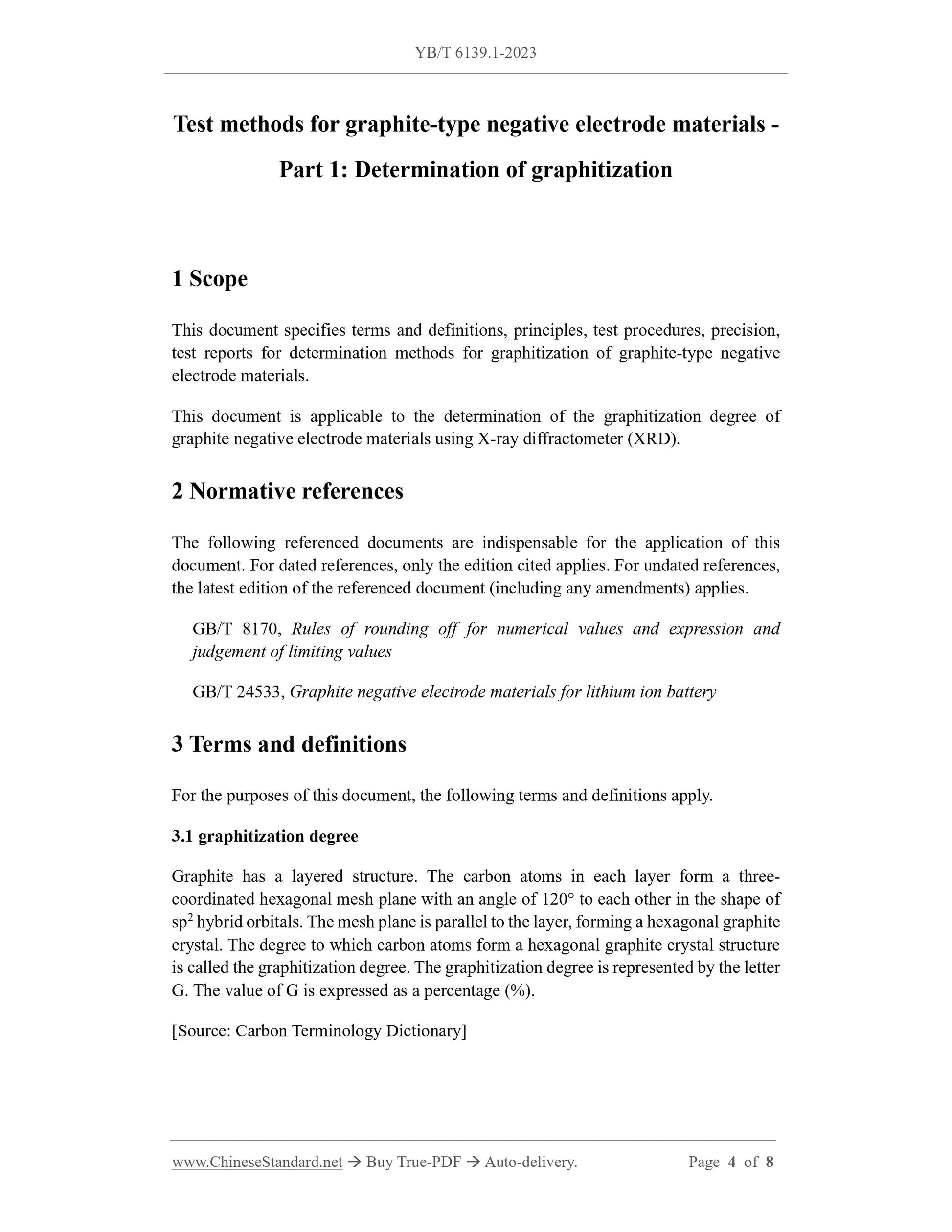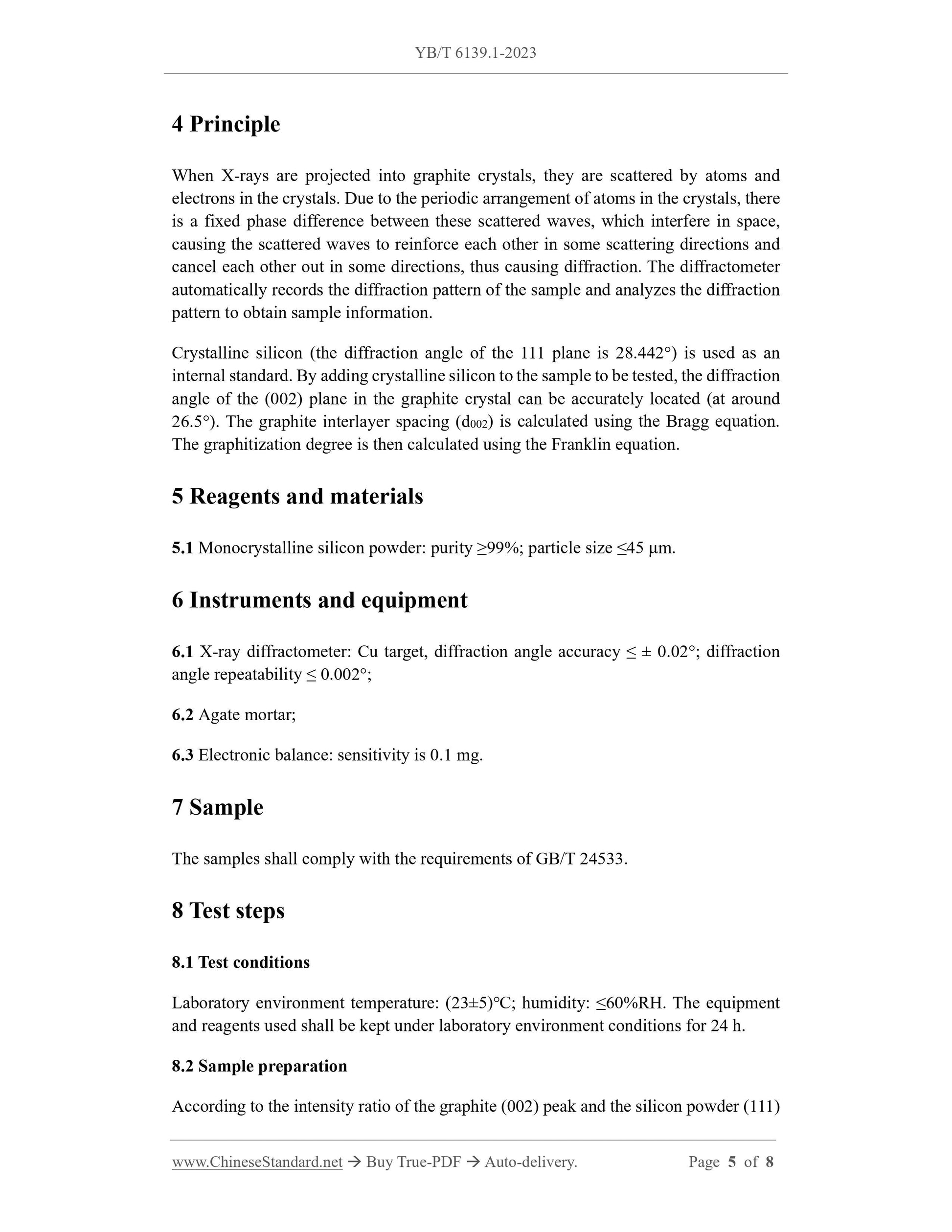1
/
of
5
www.ChineseStandard.us -- Field Test Asia Pte. Ltd.
YB/T 6139.1-2023 English PDF (YB/T6139.1-2023)
YB/T 6139.1-2023 English PDF (YB/T6139.1-2023)
Regular price
$120.00
Regular price
Sale price
$120.00
Unit price
/
per
Shipping calculated at checkout.
Couldn't load pickup availability
YB/T 6139.1-2023: Test methods for graphite-type negative electrode materials - Part 1: Determination of graphitization
Delivery: 9 seconds. Download (and Email) true-PDF + Invoice.Get Quotation: Click YB/T 6139.1-2023 (Self-service in 1-minute)
Newer / historical versions: YB/T 6139.1-2023
Preview True-PDF
Scope
This document specifies terms and definitions, principles, test procedures, precision,test reports for determination methods for graphitization of graphite-type negative
electrode materials.
This document is applicable to the determination of the graphitization degree of
graphite negative electrode materials using X-ray diffractometer (XRD).
Basic Data
| Standard ID | YB/T 6139.1-2023 (YB/T6139.1-2023) |
| Description (Translated English) | Test methods for graphite-type negative electrode materials - Part 1: Determination of graphitization |
| Sector / Industry | Ferrous Metallurgy Industry Standard (Recommended) |
| Classification of Chinese Standard | Q50 |
| Classification of International Standard | 29.050 |
| Word Count Estimation | 6,612 |
| Date of Issue | 2023-12-20 |
| Date of Implementation | 2024-07-01 |
| Issuing agency(ies) | Ministry of Industry and Information Technology |
| Summary | This standard specifies the terms and definitions, principles, test procedures, precision, and test reports of methods for determining the degree of graphitization of graphite anode materials. This standard is applicable to the determination of graphitization degree of graphite anode materials using X-ray diffractometer. |
Share
